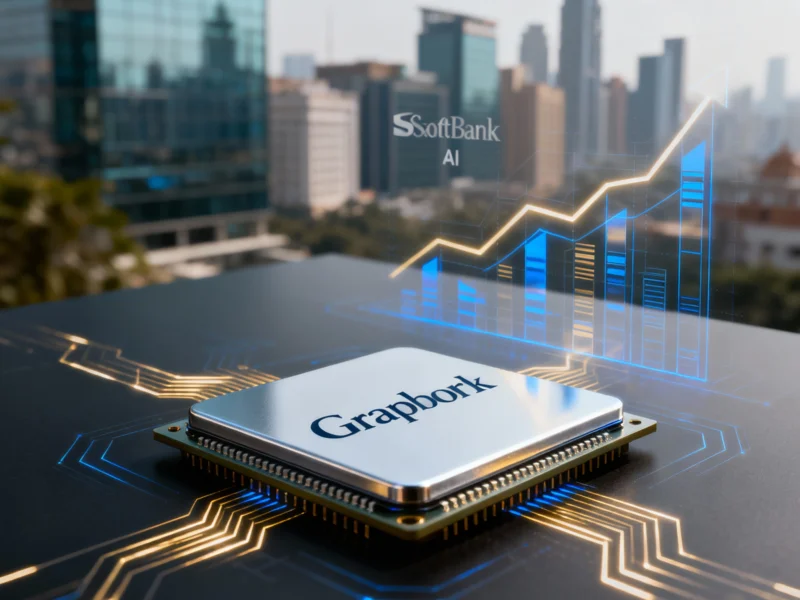The Rise of Autonomous AI Systems
Artificial intelligence is undergoing a fundamental transformation as it moves beyond simple chat interfaces into the realm of autonomous action. AI agents represent the next evolutionary step in generative AI, enabling systems to not just generate text but to actively perform tasks and make decisions in real-world environments. As AI agents emerge as the next frontier in generative AI, understanding their underlying architecture becomes crucial for developers and businesses alike.
The transition from passive AI to active agents marks a significant shift in how we interact with artificial intelligence. Rather than simply responding to prompts, these systems can now execute complex workflows, access external tools, and operate with increasing autonomy. This evolution is part of a broader trend toward hyperscale data centers driving massive computational growth to support these advanced AI workloads.
Core Architecture of AI Agent Systems
At its simplest, an AI agent can be defined as a large language model that runs tools in a loop to achieve specific goals. When a user provides an objective—such as booking restaurant reservations near a theater—the agent doesn’t just suggest options; it actively executes the necessary steps to complete the task.
The infrastructure supporting these systems consists of several critical components working in harmony. These include development frameworks for building agents, secure runtime environments, translation mechanisms between text and tool calls, memory systems for tracking interactions, authorization protocols, and performance monitoring capabilities. The complexity of these systems reflects the growing sophistication required for Salesforce’s bet on a $60 billion automated future by 2030.
Development Frameworks and Reasoning Models
Building effective AI agents requires specialized development frameworks that allow creators to define goals using natural language and specify available tools. The most successful approaches incorporate the ReAct (reasoning + action) model, where agents cycle through thought processes, actions, and observations to progressively accomplish their objectives.
Developers can equip agents with predefined tools like databases and microservices, complete with natural-language explanations of their purposes and API syntax. More advanced systems can even generate their own tools dynamically—for instance, creating Python code to sort data tables when existing tools prove inadequate. This flexibility mirrors the approach taken by Microsoft’s transformation of Windows through AI integration, where systems adapt to user needs.
Secure Runtime Environments
Deploying AI agents requires robust isolation mechanisms to ensure security and efficiency. Traditional approaches like containerization and virtual machines have given way to more sophisticated solutions like Amazon Web Services’ Firecracker microVMs, which provide secure isolation with minimal overhead.
In session-based isolation models, each agent operates within its own microVM complete with computational resources, memory, and file systems. When sessions conclude, the agent’s state information transfers to long-term storage, and the microVM is destroyed. This approach ensures that sensitive data and operations remain protected while maintaining system performance.
Tool Integration and Communication Protocols
Effective communication between agents and external tools relies on standardized protocols, with the model context protocol (MCP) emerging as a popular solution. MCP establishes direct connections between LLMs and dedicated servers that execute tool calls, while providing standardized formats for data exchange.
When traditional API-based tools aren’t available, agents can utilize computer use services that translate cursor movements and clicks into actionable commands. This capability enables agents to interact with websites and applications that lack formal APIs, significantly expanding their operational range. The importance of such integration is highlighted by Microsoft’s expansion of Copilot with voice activation, demonstrating how AI systems are becoming more accessible.
Authorization and Security Considerations
Authorization in agentic systems operates bidirectionally: users require authorization to run agents, while agents need permissions to access networked resources on users’ behalf. Solutions like OAuth enable secure access delegation, allowing agents to utilize protected resources without directly handling user credentials.
Alternative approaches involve secure server sessions where the server maintains its own credentials for protected resources. This layered security approach is essential for maintaining trust in autonomous systems, particularly as Microsoft explains how it will secure AI agents against potential threats.
Memory Systems: From Immediate Context to Long-Term Recall
AI agents employ sophisticated memory architectures that operate across multiple timescales. Short-term memory handles immediate task requirements, storing information like restaurant lists during booking processes without overwhelming the LLM’s context window. Using semantic embeddings, agents can retrieve relevant records based on user preferences while maintaining focus on current objectives.
Long-term memory preserves user preferences and session summaries across interactions. When sessions conclude, context and short-term memory contents undergo distillation processes including summarization, embedding, and chunking—where documents split into topically grouped sections for efficient vector-based retrieval. This persistent memory enables continuity, allowing agents to remember travel preferences from airline bookings when subsequently arranging hotel accommodations.
Performance Monitoring and Future Directions
Comprehensive tracing systems record API calls, responses, and LLM interactions, enabling manual review and performance evaluation. This transparency allows developers to refine agent behavior and identify areas for improvement, ensuring systems operate as intended.
The evolution of AI agents represents just one aspect of the broader technological transformation occurring across industries. As these systems become more sophisticated, they’ll need to navigate complex environments much like the electric vehicle market facing critical transitions, adapting to new challenges and opportunities.
The Path Forward for Autonomous AI
While the engineering behind AI agents involves significant complexity, the fundamental concepts remain accessible when broken down into their component parts. These systems combine large language models with tool-calling capabilities, memory management, and secure execution environments to create autonomous entities capable of accomplishing real-world tasks.
As development continues, we can expect AI agents to become increasingly sophisticated in their reasoning, more efficient in their resource utilization, and more seamless in their interactions with both digital and physical environments. The convergence of these technologies points toward a future where AI doesn’t just assist with tasks but actively manages complex workflows across diverse domains.
Based on reporting by {‘uri’: ‘venturebeat.com’, ‘dataType’: ‘news’, ‘title’: ‘VentureBeat’, ‘description’: ‘VentureBeat is the leader in covering transformative tech. We help business leaders make smarter decisions with our industry-leading AI and gaming coverage.’, ‘location’: {‘type’: ‘place’, ‘geoNamesId’: ‘5391959’, ‘label’: {‘eng’: ‘San Francisco’}, ‘population’: 805235, ‘lat’: 37.77493, ‘long’: -122.41942, ‘country’: {‘type’: ‘country’, ‘geoNamesId’: ‘6252001’, ‘label’: {‘eng’: ‘United States’}, ‘population’: 310232863, ‘lat’: 39.76, ‘long’: -98.5, ‘area’: 9629091, ‘continent’: ‘Noth America’}}, ‘locationValidated’: False, ‘ranking’: {‘importanceRank’: 221535, ‘alexaGlobalRank’: 7149, ‘alexaCountryRank’: 3325}}. This article aggregates information from publicly available sources. All trademarks and copyrights belong to their respective owners.



